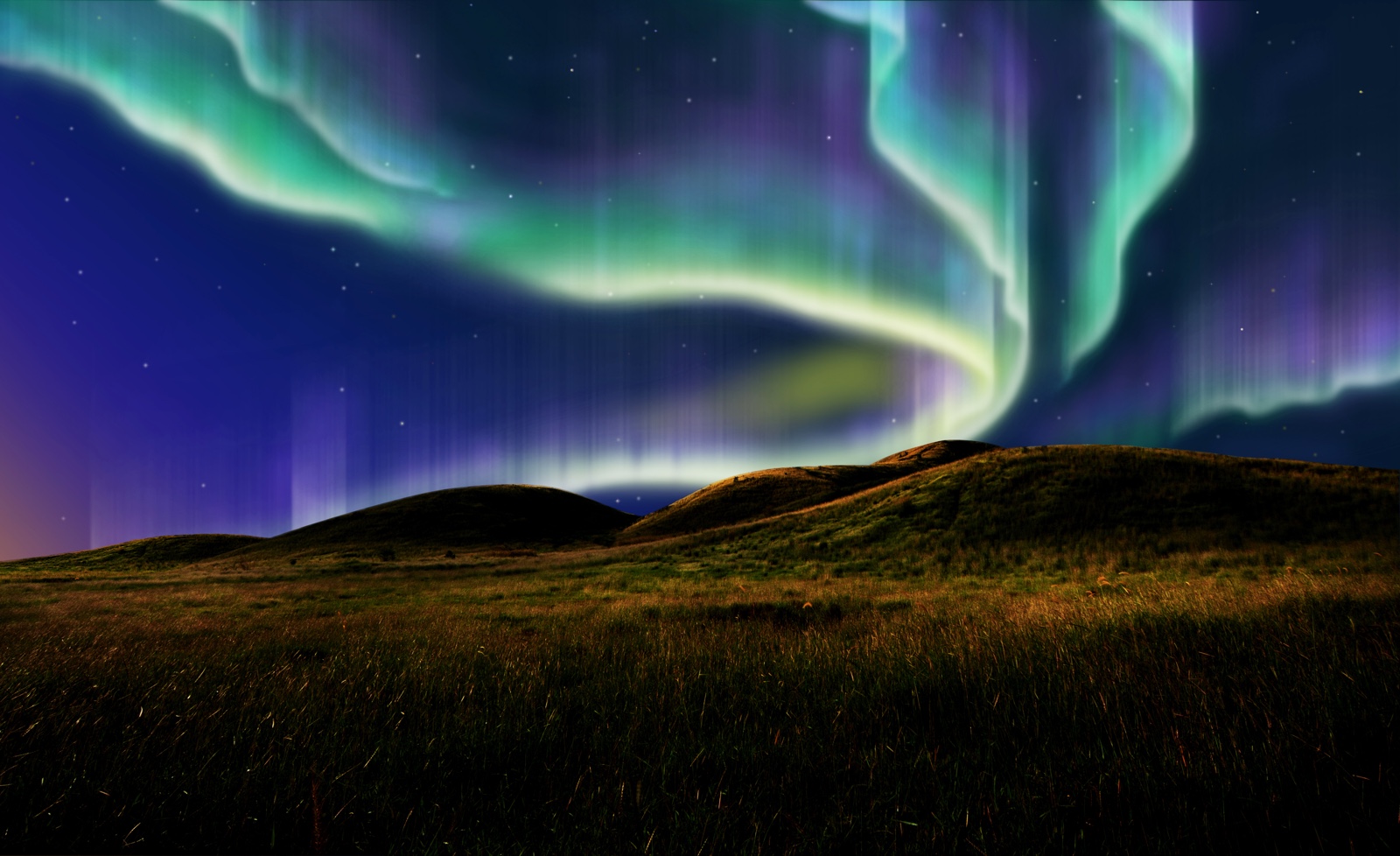'Explosive Auroras': What Causes These Strobe Light Displays?
High-speed video of the northern lights has revealed why the glorious celestial shows sometimes flicker like strobe lights: It's all about the gases.
A team from the University of Tokyo and Japan's Institute of Polar Research spent three years taking high-speed video of the aurora borealis. They were looking for pictures of "explosive auroras," which flash on and off rather than making the curtain-like shapes that most aurora photographers seek.
What they found was not only the well-known flickering that happens every tenth of a second, but also faster pulses. Some auroras, they found, flickered at 50 to 60 times per second, and some at 80 times per second. [Aurora Photos: See Breathtaking Views of the Northern Lights]
Auroras happen when charged particles from the sun hit Earth's magnetic field at altitudes of a few thousand miles. Those charged particles are driven at high speed along the magnetic field lines and collide with atoms of gas in the far upper atmosphere of Earth, a region called the exosphere. When that collision happens, the oxygen and nitrogen atoms in the air emit light, according to the National Oceanic and Atmospheric Administration website. Whereas oxygen gives off a greenish-yellow or red light, nitrogen typically emits a blue light, according to NASA.

By looking at the video footage, the researchers could track the faster pulses of light to see their regular frequency, which suggested the flickering happens because some atoms have what is called a cyclotron frequency, they said. The cyclotron frequency is how often an ion — an atom stripped of one or more electrons — revolves around a magnetic field line in a spiraling motion. In the case of oxygen, the atoms spiral at about 10 times per second. This creates an electromagnetic ion cyclotron, or EMIC wave, which propagates through the gas of charged particles (called a plasma). EMIC waves start high in the atmosphere, from an altitude of about 1,800 miles down to 900 miles (3,000 to 1,500 kilometers). The waves are oscillations in the electrons of the various gas atoms — oxygen, hydrogen and nitrogen — which move back and forth near magnetic field lines. (It's like a crowd of people doing the wave in a stadium.)
The EMIC waves generate waves in the plasma itself, and those waves interact with the charged particles. Those charged particles — mostly free electrons — get to the atmosphere at lower altitudes, about 250 to 60 miles (400 to 100 km) up, hit molecules of gas in the atmosphere and make auroras. Meanwhile, as the wave travels along the magnetic field lines, it stimulates the ions in the plasma to glow at a characteristic frequency. When charged particles, stimulated by the EMIC wave, all move in unison, they emit radiation we can see as a flicker with a "beat" that matches the cyclotron frequency. Carefully examining the flickering can reveal what gases are in the plasma.
"Looking at the flickering in detail thus helps us to diagnose the ambient plasma environment in space," study co-author Ryuho Kataoka of the National Institute of Polar Research told Live Science in an email.
Sign up for the Live Science daily newsletter now
Get the world’s most fascinating discoveries delivered straight to your inbox.
The observations show that there's more to the flickering than oxygen, which has a cyclotron frequency of 10 times per second. The other, faster flickering was likely due to hydrogen. "Hydrogen ions' cyclotron frequency is 16 times faster than oxygen's, while helium ion's cyclotron frequency is four times faster than oxygen's," Kataoka said. "So, if you had 10 hertz oxygen frequency as a base line, then 'hydrogen-band' EMIC waves appear at the frequency range between 40 hertz and 160 hertz." That's right where the faster flickering was.
In the video footage, you can see the characteristic green of oxygen at 60 to 120 miles (100 to 200 km) up. At higher altitudes, oxygen emits in the red wavelength range.
"Astronomical objects with magnetic fields are found throughout the cosmos, with Earth being one of them. On such objects, we observe excitation of plasma waves by accelerating particles, and the interactions between plasma waves and particles, are occurring all over the place," Kataoka said in a statement. "However, Earth is the only place we can observe these phenomena in detail."
The study was first published in the May 13 issue of the journal Geophysical Research Letters.
Originally published on Live Science.










